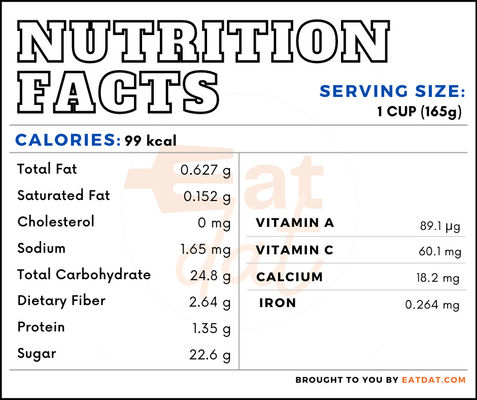
Mango
What is a Mango?
Mango is a tropical stone fruit with a yellow, red, or green edible skin and a deep yellow flesh. It has a stone in the center, which is inedible, and the fruit is often eaten raw, although it is also used extensively in desserts and drinks.
- When raw, this fruit can be used to make different savory dishes, including chutneys, salads, and pickles.
- Ripe mangoes taste very sweet, while the raw fruit has a sour and tart taste. It is the national fruit of India, Pakistan, the Philippines, and Haiti.
There are more than 1,000 varieties of this fruit cultivated, but only about 30 are commercially popular. These include Alphonso, Kesar, Dasheri, Himsagar, Chausa, Badami, Safeda, Bombay Green, Langra, Totapuri, Neelam, Raspuri, Mulgoba, Lakshmanbhog, and Amrapali.
Some common ways to use this fruit in the kitchen include:
- Smoothies
- Cakes
- Mousses
- Milkshakes
- Iced Teas
- Chutneys
- Salsas
- Lassi
- Halwa
- Kulfi
- Shrikhand
- Raita
Origin of mangoes
This fruit is native to India and has been in existence for more than 60 million years. Fossils of mango leaves have been found dating back to that period. Human cultivation of this fruit has a history of about 6,000 years in India, and Hindu scriptures from around 4000 BC mention this fruit. The fruit spread from India into Southeast Asia through Buddhist monks in 400 BC. It was in 700 AD that it was introduced to China by Hwen T’sang, a Chinese traveler.
By the 10th century, Persians had discovered the fruit and taken it back with them, spreading it around East Africa. Later on, the Portuguese discovered it when they landed in Kerala. The word ‘mango’ itself may have partly originated from the Portuguese word, manga. Other roots for the word may be the Malay mangga and the Tamil mankay. The Portuguese would also introduce the fruit to Europe, as well as the Americas. Today, this fruit is popular throughout the world and cultivated in most tropical countries.
Nutrition
This fruit is chock full of calories and complex carbohydrates. Despite its high carbohydrate content, this fruit has a low glycemic index of 51. The fruit is rich in vitamins, such as folate and vitamins A, B6, C, and K, as well as in minerals like potassium, copper, calcium, and iron. Also, the fruit contains antioxidant and anti-inflammatory properties. One cup of sliced mangoes contains the nutritional value of:

Regular consumption of mangoes may help in regulating blood sugar, battling allergies, treating or preventing parasitic, bacterial, and viral diseases, preventing cancer, and regulating digestion. Furthermore, its kernels may be used to treat diarrhea, hemorrhages, and bleeding hemorrhoids.
However, overconsumption of mangoes may lead to health problems such as diabetes, obesity, and digestive issues. Some individuals may also be allergic to the fruit, so they should avoid consuming it.
Commercial production
India accounts for about 50 percent of the world’s production. China, Thailand, Mexico, Indonesia, Pakistan, Brazil, Egypt, Bangladesh, and Nigeria are other main producers of the fruit. This fruit takes up 22 percent of the world’s area under fruit cultivation. It requires a tropical or subtropical climate, as well as a good rainy season and dry summers. The fruit grows best in well-drained, mildly acidic soils.
Mango recipes
This fruit is a versatile fruit that may be eaten raw, as well as in sweet and savory preparations. When raw, it can be used in salads, pickles, soups, rice dishes, and marinades. This ripe fruit is often consumed raw but is also extensively used to make desserts, sweets, drinks, and cocktails. Here are a few popular recipes:
- Fruit Cake
- Avakkai Pickle
- Vadu Mangai Pickle
- Mango Passion Cocktail
- Mango Lassi
- Mango Chicken
- Thai Salad with Peanut Dressing
- Mango Kerabu
- Ogbono Soup
- Fruit Pudding
- Fruit Float
- Mango Salsa
- Mangonada
- Fish Mango Salad
- Mango Chutney
- Raw Mango Rice
FDA regulations
The FDA describes all fresh fruits as raw agricultural commodities, and strictly regulates all aspects of their growing, harvesting, packing, and storage. The USDA grades mangoes into U.S. Fancy, U.S. No. 1, and U.S. No. 2. In recent years, The National Mango Board has attempted to increase the consumption of this fruit in the US.
References
Indu Mehta, History of Mango – ‘King of Fruits’, Department of History, Kumaun University, International Journal of Engineering Science Invention ISSN (Online): 2319 – 6734, ISSN (Print): 2319 – 6726 www.ijesi.org ||Volume 6 Issue 7|| July 2017 || PP. 20-24, http://www.ijesi.org/papers/Vol(6)7/Version-3/D0607032024.pdf
Mango Cultivation, National Mango Database, Department of Biotechnology, Indian Council of Agricultural Research, Central Institute for Subtropical Horticulture, https://mangifera.res.in/pop/TN_TNAU_Mango_POP.pdf
Shah, K A et al. “Mangifera indica (mango).” Pharmacognosy reviews vol. 4,7 (2010): 42-8. doi:10.4103/0973-7847.65325
https://www.ncbi.nlm.nih.gov/pmc/articles/PMC3249901/
Lauricella, Marianna et al. “Multifaceted Health Benefits of Mangifera indica L. (Mango): The Inestimable Value of Orchards Recently Planted in Sicilian Rural Areas.” Nutrients vol. 9,5 525. 20 May. 2017, doi:10.3390/nu9050525, https://www.ncbi.nlm.nih.gov/pmc/articles/PMC5452255/
